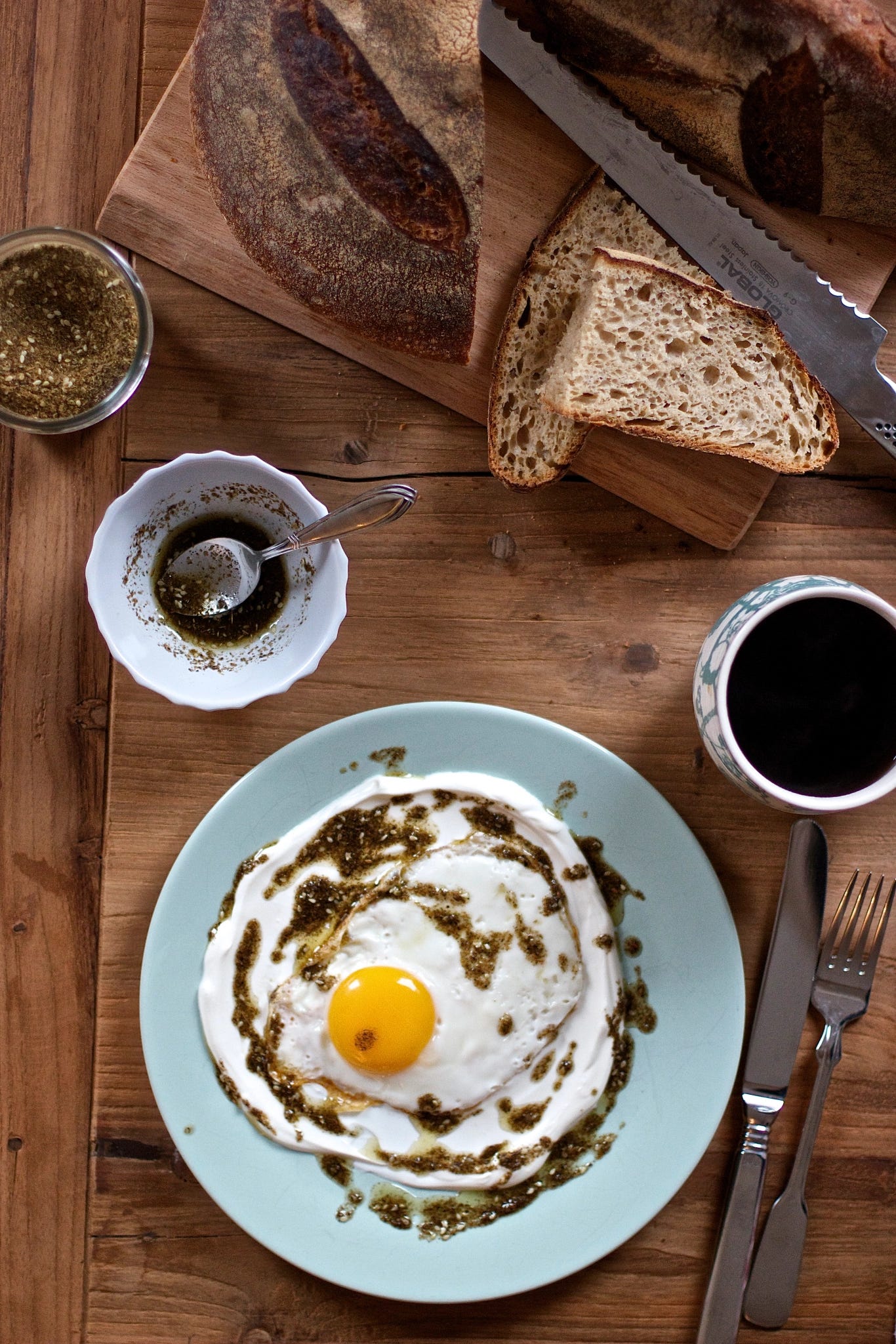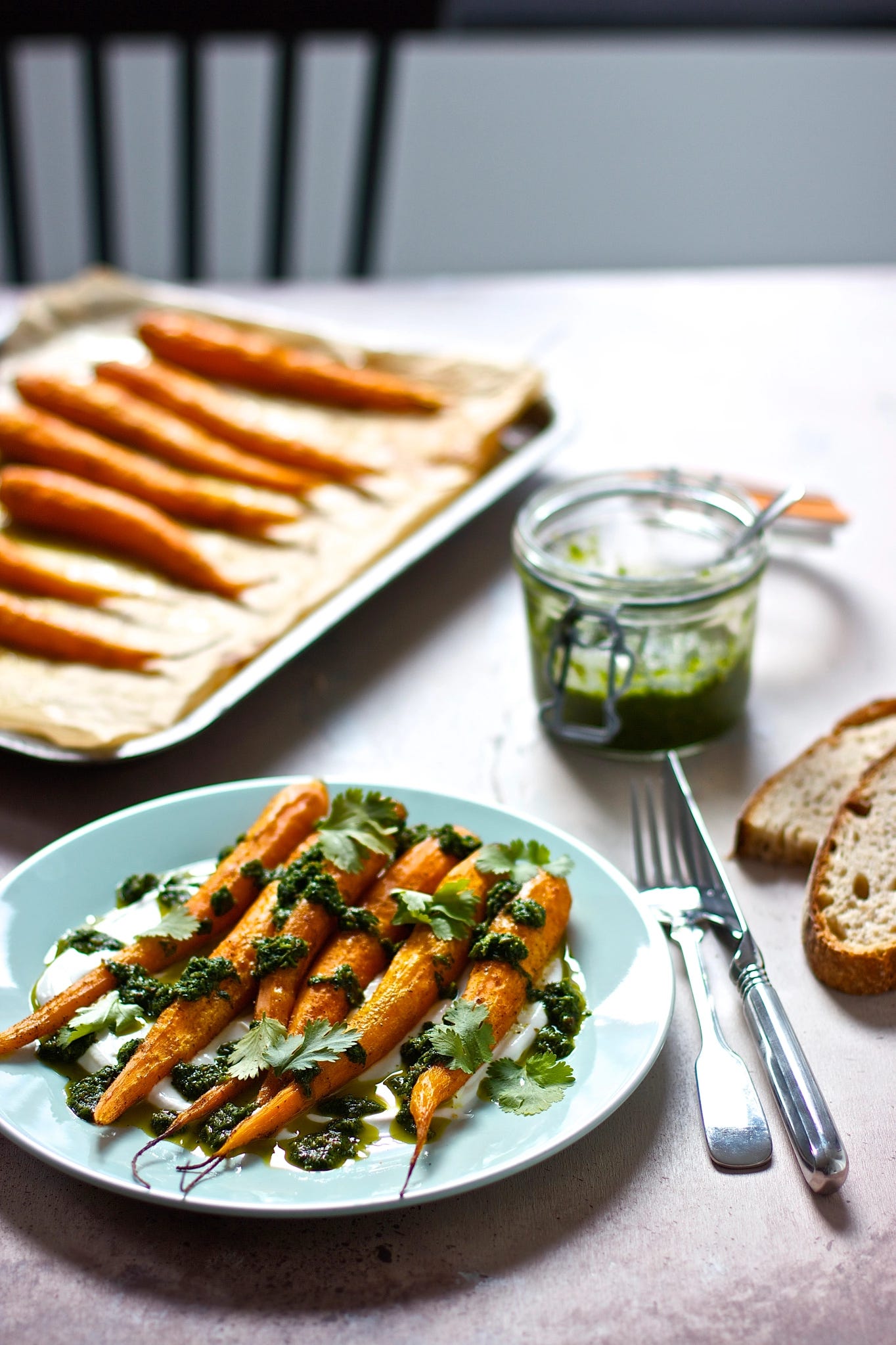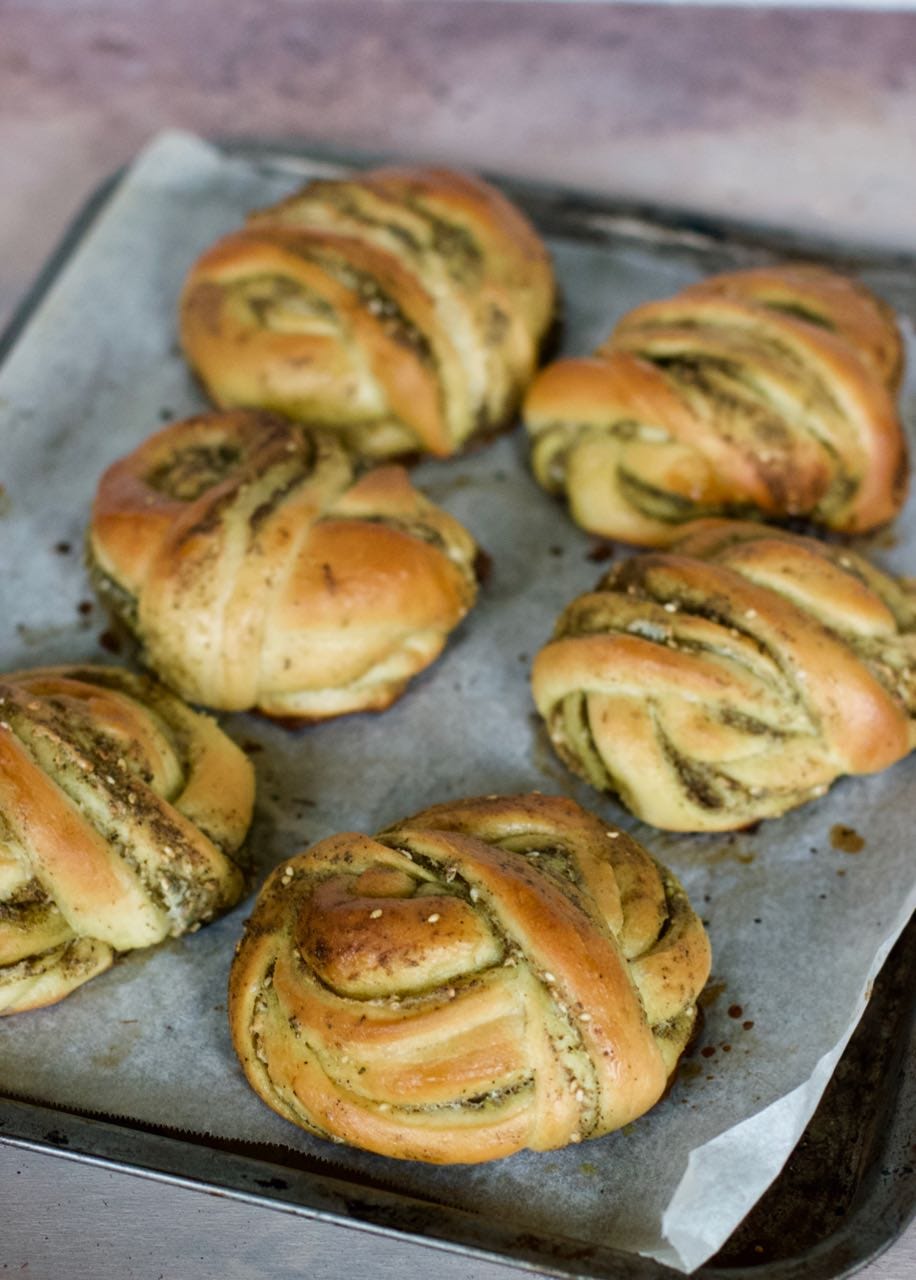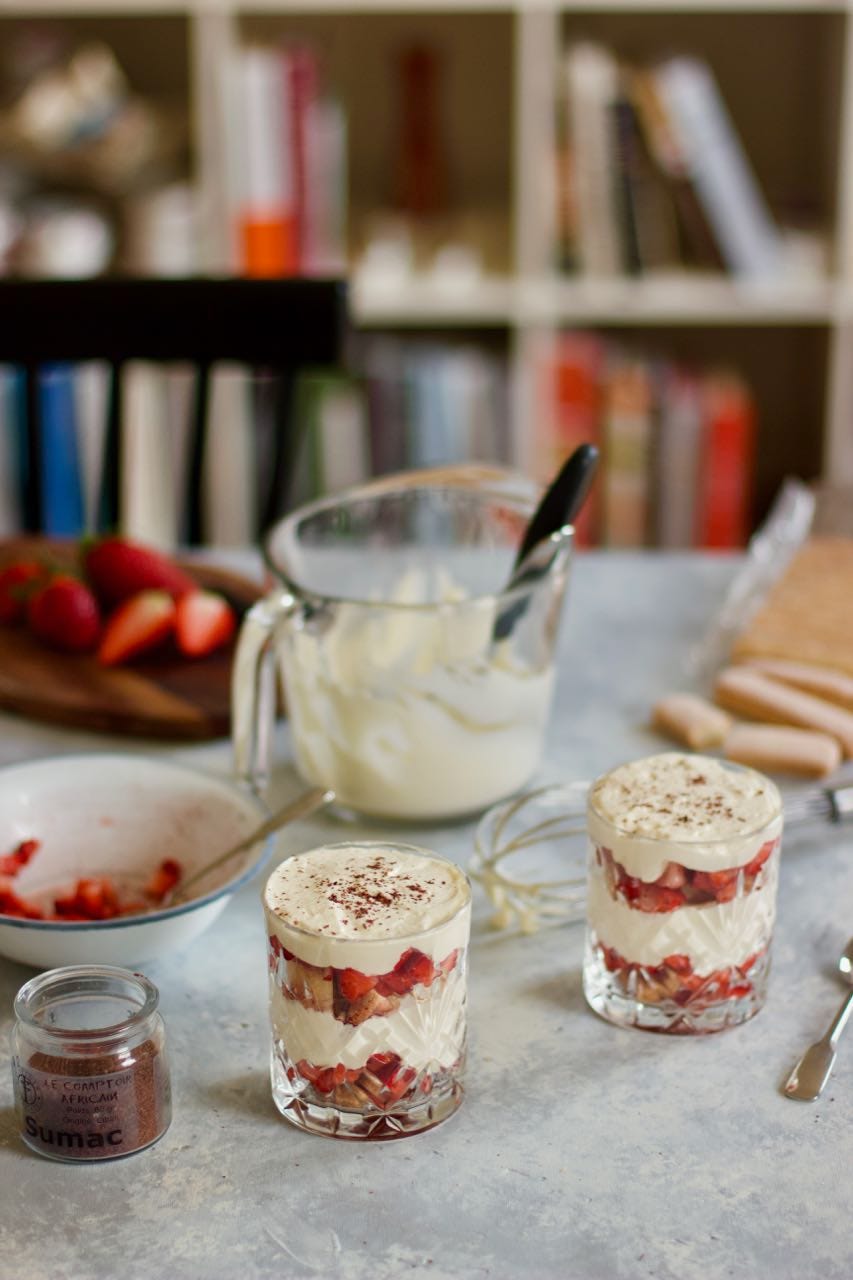Ingredient Spotlight: Labneh
(also known as easily the best thing you can make with a pot of yoghurt), plus some tips and ideas for how to turn labneh into delicious desserts and baked goods
Hello, and welcome to Newsletter No 31 here on Substack! Thank you for stopping by. If you are already subscribed - THANK YOU! Seeing hundreds of you read my newsletter each week means the world to me! And if you are not yet a subscriber, hit the link below if you are interested in recipes as well as tips and tricks to make the most of our increasingly eclectic pantries and a good dose of my at times random musings about all things food!
❤️ Did you know that if you hit the HEART at the top or bottom of this post, it makes it easier for people to find this newsletter? (And also puts huge smile on my face!)
Welcome back to Ingredient Spotlight where once a month I write about one of the many different ingredients I like to bake and prepare desserts with. When I started this feature, I wasn’t sure how often I would shine the spotlight on a particular ingredient. As it turns out not only do I enjoy writing these Ingredient Spotlights, you, my readers, seem to enjoy these Ingredient Spotlights just as much! So expect to see more of these in the future. And let me know in the comments below in case there are any particular ingredients languishing at the back of your pantry or crowding out your spice rack that you would like some new ideas for what to make with!
For the first two editions of Ingredient Spotlight I explained how to incorporate Turmeric and Sumac into delicious baked goods and desserts. Today’s edition is a little different - instead of highlighting another spice I want to talk about Labneh. Because Labneh must be the best possible thing you can make with a pot of yoghurt! A bold statement you will hopefully agree with once you read my tips for making the tastiest possible Labneh and you see my suggestions and recipe ideas for all the wonderfully delicious things you can make with Labneh.
I have moved around quite a bit, spending periods living in the UK, Austria, Argentina, Belgium and Italy, as well as travelling extensively. So I appreciate how many places have different types of delicious dairy that are unique to that particular country or region and how something as simple as milk or butter can vary hugely in taste depending on where you live.
But the joy of having easy access to say fresh sheep’s milk ricotta and buffalo mozzarella prepared that same morning, as I did when I lived in Rome, can quickly turn to frustration once back home and the different types of dairy you used to consider daily staples are either nowhere to be found or the quality simply does not compare to what you are used to (e.g. those tubs of heavily processed foil sealed ricotta you can now buy in most supermarkets are nothing in comparison to fresh sheep’s milk ricotta in terms of flavour and texture).
As someone who hates food waste I also struggle to get on board with the idea that you often only need a small amount of a specific type of dairy for your recipe. Because it feels inevitable that you will then end up with a fridge full of half-used pots of different kinds of dairy and trying to use them all up before they go bad.
What makes Labneh so special for me is that it’s the one dairy product I have found that I happily use in place of a number of different kinds of dairy. Labneh substitutes equally well for cream cheese and ricotta (e.g. for simple tartines but also in baking), I happily dollop Labneh over soups and chilis instead of sour cream, and Labneh also acts as a decent substitute for Mascarpone. And, as I have discovered, Labneh is also a fantastic stand-in for many types of dairy in baked goods and desserts.
What is it?
Labneh is technically a type of cheese and it is what you end up with if you strain your yoghurt and the whey starts to drip out of it. Labneh is so delicious because the process of removing some of the moisture from the yoghurt concentrates all the flavours and increases its fat content. Bonus point, it also stays fresh for longer than yoghurt itself.
If you want to make your own Labneh, line a sieve or colander with a nutmilk bag, muslin or clean kitchentowel and place above a bowl. Add your yoghurt and let it strain overnight or even longer, depending on your desired final texture (there are no hard and fast rules for how long you need to strain your yoghurt until you can call it Labneh. It depends both on how liquid the yoghurt you start with is and also what you want to use the Labneh for. Just beware, the wetter your yoghurt is (and hence the more whey it contains), the more whey it contains to drip out of it which also means you will be left with very little Labneh compared to how much yoghurt you started with. Also, the longer you strain your yoghurt, the thicker and drier your Labneh will get and thick Labneh is sometimes shaped into small balls and rolled in different herbs and spices and then preserved in olive oil.) Once strained, season the labneh with salt should you so wish and store in the fridge until ready to use. Labneh should keep at least a week in the fridge.
What does it taste like?
To me, Labneh tastes like a cross between yoghurt and cream cheese. It is less acidic than fresh yoghurt but at the same time not as dense cream cheese. In short, it’s a beautifully thick but creamy dairy product with all the milky richness that makes it the perfect addition to your baking and dessert ingredient arsenal.
When it comes to homemade Labneh, it goes without saying that the tastier your yoghurt is, the tastier the resulting Labneh will be. Now different people may have different preferences, but I find that the best yoghurt for making Labneh is a creamy full-fat yoghurt with only hints of acidity (e.g. Greek yoghurt) – this will result in a rich and creamy Labneh reminiscent of cream cheese and yet entirely it’s own thing.
What does it go well with?
In the Middle East (where you can often buy readymade Labneh in supermarkets), there are a number of different ways of serving (and eating!) Labneh:
At its most basic, seasoned with nothing but salt it can be served as a dip alongside other mezze (even better when there is a pool of good olive oil in the middle and maybe a sprinkle or two of za’atar). Labneh can also serve as the basis for lots of different dips, e.g. with beetroot or red peppers.
Labneh is also the perfect bed for roasted vegetables (like the roasted carrots with zhough pictured above), but also as part of breakfast, topped with fried eggs and za’atar oil (see the first image at the top of this newsletter) and some sourdough bread for dipping on the side.
Labneh also works beautifully as a filling for savoury buns like the Labneh and Za’atar Buns pictured above).
But as I discovered over the years, Labneh is fantastic in baked goods and desserts where it is a great stand-in for both cream cheese and mascarpone in many recipes. I would also happily eat some lightly sweetened Labneh topped with oven-roasted plums and some buttery crumble or toasted nuts. I can also easily imagine a Swiss roll filled with a lemony Labneh mousse and maybe some sour cherry compote. See below for some more ideas and links to a number of delicious sounding sweet recipes using Labneh.
How can I use it?
Below are some ideas for delicious desserts and baked goods made with Labneh, from the very simple to the more elaborate, starting with Labneh whipped cream.
Labneh whipped cream could not be simpler. It is basically whipped cream made with 50:50 (or another ratio you prefer) of whipped cream and labneh (you could also use thick Greek yoghurt). I adore Labneh whipped cream because the Labneh gives the whipped cream a bit of acidity but also stability. Unlike regular whipped cream which will often start weeping liquid after a few hours and slowly start collapsing, Labneh whipped cream will hold its shape for several days. Sweetened or not it is delicious as an accompaniment to different kinds of cake and desserts but you could also turn it into a simple mousse to enjoy on its own - e.g. by sweetening it and flavouring it with lemon zest and finely chopped preserved lemon.
As delicious as Labneh is as a bed for all kinds of roasted vegetables, it works equally well with fruit, whether fresh fruit like in this Ottolenghi’s Berry Platter with Sheep’s Labneh and Orange Oil or roasted fruit like in this Roasted rhubarb with sweet labneh, also by Ottolenghi. And while Labneh is not quite as rich as Mascarpone it nonetheless is a decent stand-in for Mascarpone, e.g. when it comes to Tiramisu, especially fruit-based Tiramisu, like this Tiramisu-ish with Labneh and Strawberries I shared on the newsletter. At the same time this Ottolenghi Lemon and Labneh Mascarpone Layer Cake also sounds delicious.
And since Labneh works well as a replacement for cream cheese, next time you are making carrot cake why not give it a Middle Eastern twist and add some cardamom to your carrot cake batter and top the cake with a Labneh frosting (simply substituting the cream cheese in your favourite cream cheese frosting recipe 1:1 with Labneh)?
And while temperatures are not exactly summer-like in Brussels so far and the incessant rain has me spending my evenings curled up on the sofa under a giant woollen blanket, I already bookmarked this Labneh Ice Cream with Pistachio Brittle for when it’s finally ice cream weather. In the meantime, these Sweet Labneh Dumplings with Toasted Cardamom Crumbs and Sumac Cherries I shared on the newsletter a few months ago might be more weather appropriate. A delicious sweet curd cheese recipe where Labneh takes on the role more traditionally given to Quark or Topfen (aka fresh curd cheese).
Have you made any desserts or baked with Labneh before? If so, I would love to hear about it in the comments. And let me know if there are other ingredients you would like me to feature in my Ingredients Spotlight series!








This is a revelation. I make labneh anyway but had no idea I could use it to replace cream cheese, ricotta etc . Thank you, thank you, this is going to be a game changer for me
I love Labneh. Make it frequently. I love the tips on using it as a replacement so I don’t need so many dairy products in the fridge.